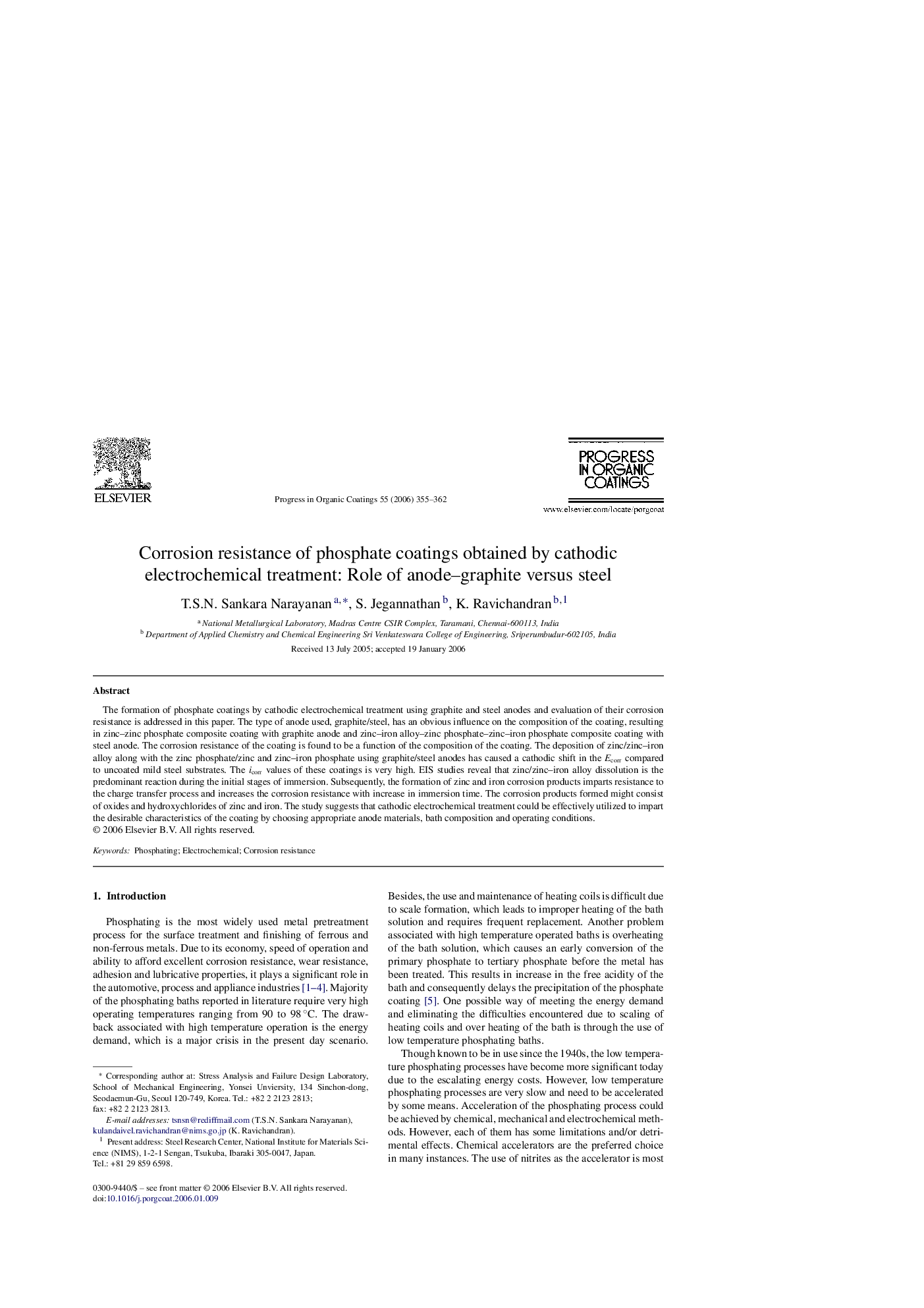| Article ID | Journal | Published Year | Pages | File Type |
|---|---|---|---|---|
| 694037 | Progress in Organic Coatings | 2006 | 8 Pages |
The formation of phosphate coatings by cathodic electrochemical treatment using graphite and steel anodes and evaluation of their corrosion resistance is addressed in this paper. The type of anode used, graphite/steel, has an obvious influence on the composition of the coating, resulting in zinc–zinc phosphate composite coating with graphite anode and zinc–iron alloy–zinc phosphate–zinc–iron phosphate composite coating with steel anode. The corrosion resistance of the coating is found to be a function of the composition of the coating. The deposition of zinc/zinc–iron alloy along with the zinc phosphate/zinc and zinc–iron phosphate using graphite/steel anodes has caused a cathodic shift in the Ecorr compared to uncoated mild steel substrates. The icorr values of these coatings is very high. EIS studies reveal that zinc/zinc–iron alloy dissolution is the predominant reaction during the initial stages of immersion. Subsequently, the formation of zinc and iron corrosion products imparts resistance to the charge transfer process and increases the corrosion resistance with increase in immersion time. The corrosion products formed might consist of oxides and hydroxychlorides of zinc and iron. The study suggests that cathodic electrochemical treatment could be effectively utilized to impart the desirable characteristics of the coating by choosing appropriate anode materials, bath composition and operating conditions.
